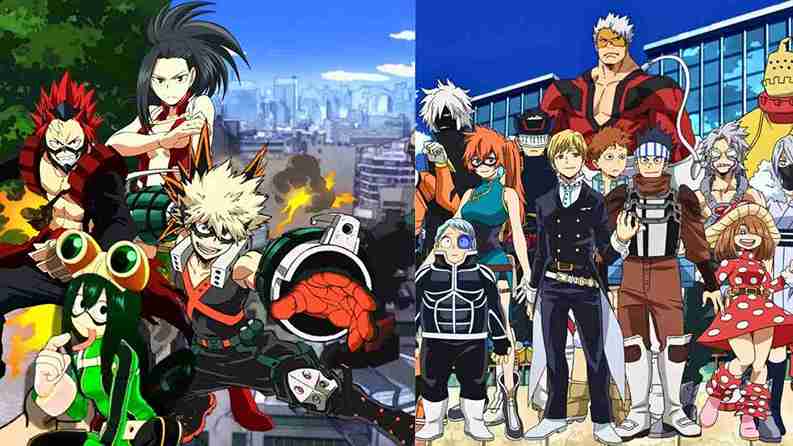
My Hero Academia is not just a story about young heroes with unique abilities trying to save the world; it’s a critique of societal structures, values, and the darker side of heroism. The series presents a world where quirks define not only a person’s potential but also their place in society.
At the heart of this world is the Hero Society, a system that celebrates some individuals as “heroes” while marginalizing others. Through its various narratives and character arcs, My Hero Academia reflects real-world issues such as class division, corruption, and the overwhelming pressure of heroism.
The Structure of Hero Society
In the world of My Hero Academia, heroes are professionals who protect people from villains using their quirks. Unlike real-world first responders, heroes in MHA are celebrities, admired by the public and ranked based on their skills and achievements. They get missions and tasks based on their rank, with top heroes like All Might being seen as near-godlike figures.
In MHA, the hero system is very hierarchical. The top-ranked heroes have a lot of power, while lower-ranked heroes get little recognition. This creates an imbalance, where only a few heroes are celebrated. It’s similar to real-world class divisions, where some people are treated better because of their skills, looks, or wealth, while others are ignored or treated poorly.
Class Division and the Quirkless
In the MHA world, the biggest division is between people with quirks and those without. Quirks are more than just abilities—they are seen as symbols of status. People with powerful quirks are highly valued, doing well as heroes and getting a lot of praise. On the other hand, people without quirks, like Izuku Midoriya, are treated as second-class. They are seen as weak and unable to contribute to society like those with quirks.
Izuku Midoriya’s story is about breaking through the barrier of being quirkless. At first, he is seen as useless in a society that values people with quirks. But when he inherits All Might’s power, it shows that it’s possible to escape this strict social system. Even with his new strength, Midoriya still faces a lot of pressure to meet the high expectations the system has for him.
Midoriya’s rise shows that power isn’t something you’re born with or stuck with forever. It also reveals the flaws in a system that creates such strict divisions between people. His journey in a world that initially sees him as inferior, and his struggle to fit in, reflect the real-life struggles of marginalized groups fighting for respect, equality, and the chance to prove their value.
Corruption Within the Hero System

The structure of the Hero Society in My Hero Academia is not without its flaws, chief among them, corruption. While heroes are meant to protect society and uphold justice, the system is riddled with problems that undermine its very purpose. Some heroes are motivated more by fame, wealth, and personal gain than by the desire to protect people.
The Pro Hero system, particularly, is shown to be a business as much as a mission, where sponsorships, media appearances, and public perception shape the actions of those in power. Heroes are ranked based on popularity and media influence, which can lead to the promotion of heroes who are good at PR but lack the true qualities of a hero.
A clear example of corruption is the “Meta Liberation Army” and the rise of Tomura Shigaraki, who goes against society’s idea of a hero. This villain group shows how the broken hero system causes anger and creates enemies. Also, characters like Endeavor, who was once seen as a hero, have dark personal lives and do questionable things. Endeavor’s desire for power leads him to abuse his family, but he still works within the system that’s supposed to protect people.
The Pressure of Heroism
Heroes in My Hero Academia face a lot of pressure because heroism isn’t just about saving lives, it’s also a show. Heroes are judged by the public, their rankings, and the media, so they’re expected to be perfect and always perform amazing heroic acts.
All Might shows how hard the pressure of being a hero can be. Even though he is the symbol of peace, he has to retire when his powers weaken. He sacrifices his health to keep giving people hope and safety. This shows the heavy burden heroes face in MHA, where they are expected to put society’s needs before their own, often causing them physical, emotional, and mental harm.
Moreover, The hero system focus more on results and public image, which creates a toxic environment where heroes have to compete with each other. This is clear in the U.A. Sports Festival, where young students compete in high-stakes events to gain recognition.
Conclusion

My Hero Academia shows a world that is both inspiring and deeply flawed. The Hero Society, meant to protect people, has problems like class divisions, corruption, and a harmful focus on competition and image. These issues mirror real-life struggles with inequality, corruption in systems, and the pressure on people to meet society’s expectations.
The series makes viewers think about what heroism really means and the sacrifices made to achieve justice. By showing the flaws in the Hero Society, My Hero Academia encourages us to question the systems in our own world and what it truly means to be a hero.
